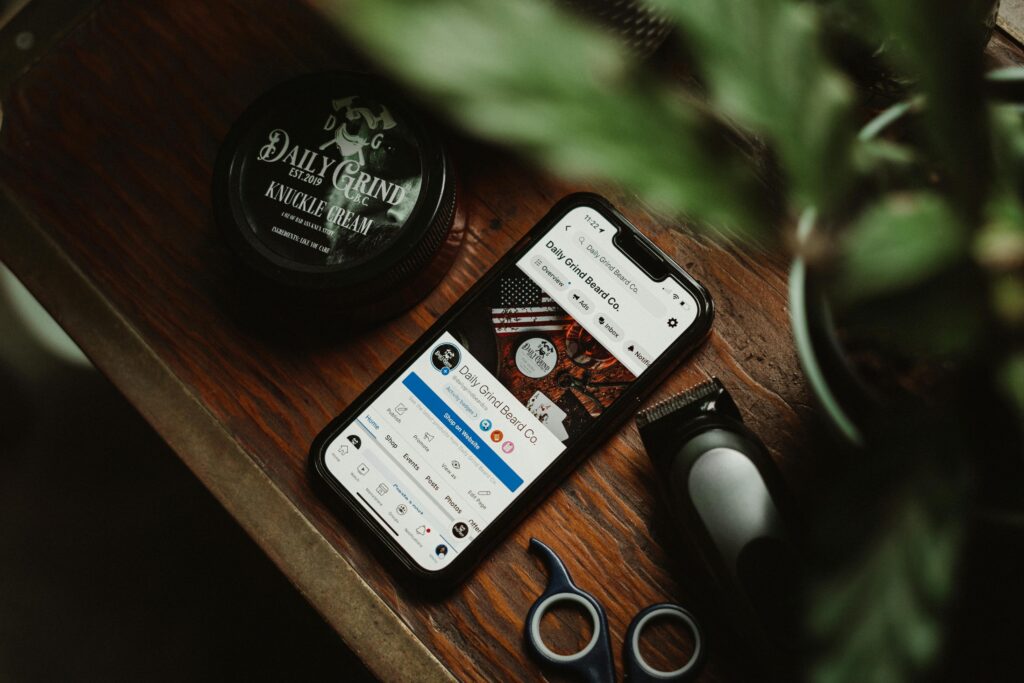
You know your business like the back of your hand, but do your customers understand why your company is unique? Beyond just your logo and website, your brand identity is a powerful tool for showcasing your value and building lasting connections with your audience.
Surface level branding like logos and media is like going on a first date or meeting someone for the first time. You skim the surface, but you don’t really know the person. Brand identity goes deeper—it’s like having known someone for years—you know their wants, their beliefs, and their personality.
As a small business owner, you know better than anyone that competition out there is tough. Just telling people what you do or what you sell won’t cut it. You need to truly stand out in the crowd of thousands by showing what makes you different (and why people should even care). Let’s break down the key factors of creating a strong brand identity.
Making your mark
Step one: create a logo, website, and online presence. Check. Now what? Once your name is out there, customers can find you. That’s great, but now they need to get to know you. Brand identity in small business gives you the chance to take control of how people perceive your business, its core values, and its unique personality.
That is step two—establishing what you want your business to be known for outside of just your services. Take a deep dive into why you started your business, who you serve, and what problems you solve for them.
Even better still, what do you stand for? This is where you can truly make your mark—especially among younger generations. In fact, a whopping 76% of Gen Z consumers like to buy from brands that stand for a greater mission or purpose. Hello, window of opportunity!
Brand identity is the key to driving trust and loyalty
A small business with a strong brand identity will appear more established, more engaged, and more trustworthy. And if you want to keep bringing customers back, they’ve got to trust you. When you consistently show up for them, they’ll continue showing up for you. Imagine you want to go skydiving and you find a company with no distinct identity or established track record—would you trust them? Probably not.
Brand identity and reputation doesn’t just drive trust and loyalty with customers. It also makes you stand out to potential employees. Employer branding is just as crucial as branding for your customers, especially in today’s wildly competitive job market. Listen to this: 40% of millennials say market reputation has the biggest influence on their impression of an employer.

Defining your brand identity
This is the fun part. You get to decide who you are and what you stand for. Your mission and values come first—mission determines where your business is going and how you will get there. Your values state what you believe in, what your company culture looks like, and how you will guide decision making. Sit with this for a while—it will be your trusty roadmap.
Next up is your target audience. In this world full of millions of consumers, who on earth are you talking to? And what do they want? Researching your target audience plays a big part in defining your brand identity and locking down a plan of action to reach those people. You don’t want to play the guessing game and leave it up to chance.
What about your competition? The market is large and saturated, so you need to know what you’re up against.
When you run a competitor analysis, consider these key steps…
Build a list of direct competitors in your industry to look out for, meaning businesses that solve the same problems you do.
Create competitor profiles that lay out their market share, their audience demographics, and other company info.
Analyze their product offerings, pricing, and how they promote themselves.
Research their marketing strategies, whether that be paid or organic.
And last but not least, get creative with your brand image. Brainstorm unique names, logos, colors, and fonts. Let that personality shine.
Strategies for building brand reputation
Now let’s talk reputation. Brand identity shows consumers and job seekers who you are—brand reputation proves it. If you’re going to “talk the talk,” you’ve got to “walk the walk.” So, how do you do that?
Coming in at number one is delivering exceptional customer service, always. Customer satisfaction directly affects your bottom line and impacts your reputation. If customers have a negative experience with your brand, it’s going to put a sour taste in their mouths and you’ll lose current or potential customers in a snap.
Here are a few tips for enhancing customer service:
Treat customers with empathy and respect. They want to feel valued, appreciated, and heard.
Provide timely support. The sooner you can help a customer, the more satisfied they will be. Organize a system that allows customers to get prompt assistance.
Be solution driven. If a customer comes to you with a problem, take time to understand and address the issue with a viable solution.
Be honest. We are all human and sometimes things go wrong. Never try to put a veil over issues that come up—it will destroy customers’ trust in you.
Focus on consistent, quality marketing
It’s a dog-eat-dog world out there, and marketing is going to be your life vest for staying afloat. You can’t simply toss your brand out there and expect people to find you. You have to show up where they are. Things like blogs, newsletters, eBooks, social media, email marketing…the list goes on.
You first want your marketing to be high-quality, and then you want it to be consistent. Decide which avenues are going to best serve your unique customer base, create a strong message, and then jump all in. You also don’t have to stop at just one strategy—cross-channel marketing can put you in front of consumers more than once and keep your brand top of mind. When they’re ready to make a move, they’ll think of you.
Pro tip: do you have any glowing reviews from current customers? Sprinkle those into your marketing messages to emphasize your positive reputation.
Now expand your mindset past the walls of your business and what you do. Think bigger—today’s consumers put a heavy focus on brands that engage in corporate responsibility and the impact they make on society, the environment, and the economy. This adds to the core of your value statement, helping consumers understand what you’re made of.


Maintaining brand consistency
You’ve established your brand, now you’ve got to keep it going strong. Developing clear and concise brand guidelines can help you stay on track with your brand identity and reputation. These guidelines help your business stay consistent and trustworthy.
And as the cherry on top, let’s not forget about the most valuable aspect of your brand: your team! Establishing brand identity helps teams better understand their mission as employees, improves performance, and increases morale. Your team can communicate better about company goals and work together to make those dreams come true.
A great way to create transparency with your team is through easy-to-use messaging tools and mobile apps like Homebase. You can share updates in real time to individuals, groups, or the entire team. Brand consistency succeeds when everyone is on the same page.
Now take a step back and look at the big picture. Ask yourself:
Do your marketing materials and content match your brand?
Do you have a clean, professional website that includes brand elements?
Are you sharing your brand voice with the world through social media and other mediums?
Is everything cohesive across your business?
If you answered no to any of those questions, we’ve got a tip: circle back to the top and run through these strategies again. Refresh on why brand identity matters to your small business—it allows consumers to get to know what you stand for, it drives brand loyalty and trust, and it gets more customers in the door.
Creating a strong brand identity and reputation will be a game-changer for your business’s success.







